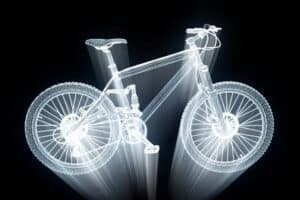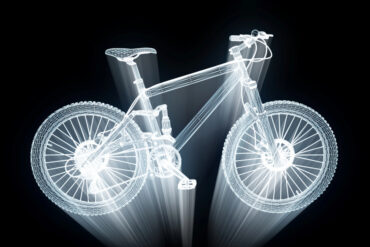
As innovative technologies redefine the sporting goods industry, companies that hesitate risk falling behind more agile, digitally empowered competitors.
In the sporting goods industry, innovation is the battleground where brands win or lose. Consumers demand more innovative, personalized, and sustainable products, pushing manufacturers to rethink every stage of the product lifecycle.
How can this be achieved? The answer lies in a digital transformation fueled by innovative technologies, including simulation, IoT, and AI-driven analytics. These forces are enhancing product design and manufacturing. And they are fundamentally reshaping how brands connect with their customers and compete in a rapidly evolving market. In this new era, those who embrace intelligence, flexibility, and sustainability will define the future of sports.
At the forefront of this transformation is the need for tools and platforms that enable manufacturers to integrate intelligence, flexibility, and sustainability into their operations. From real-time performance insights delivered by smart-enabled gear to digital twins optimizing product design, sporting goods brands leverage these technologies to remain agile, innovative, and competitive.
The Digital Shift in Sporting Goods Manufacturing
A convergence of forces is reshaping the sporting goods industry. Consumers are no longer satisfied with one-size-fits-all products—they expect equipment tailored to their unique body mechanics and goals. They want data-driven feedback to optimize their performance and demand sustainability in how gear is made and disposed of. Meanwhile, innovation is accelerating, and product cycles are getting shorter. To meet these evolving demands, manufacturers must move faster, smarter, and more collaboratively than ever before.
Digital transformation is enabling this shift. With integrated tools that connect the dots from design and prototyping to production and post-sale insights, companies are gaining the agility and intelligence needed to deliver high-quality, customized products at scale. Success depends on how well cross-functional teams—designers, engineers, data analysts, and marketers—can collaborate on unified digital platforms to create next-generation gear.
See also: How Digital Twins and Real Time Data Accelerates Time to Value
Smart-Enabled Equipment: Merging Physical and Digital
Smart-enabled sports gear is one of the most visible outcomes of this transformation. These products include connected bicycles, smart tennis racquets, wearable motion sensors, and fitness wear. Embedded IoT sensors provide real-time data about the equipment’s use.
For athletes, this means on-demand feedback that helps refine performance and prevent injury. For manufacturers, the value is equally profound: sensor data provides unprecedented visibility into product usage, revealing insights that can inform design improvements, enable predictive maintenance, and even open the door to new service-based revenue models.
Take, for example, a company producing smart cycling gear. Integrating sensors into helmets and bikes can track rider posture, acceleration, and braking patterns. This data improves rider safety and training routines and gives engineers a feedback loop, leading to better designs in future iterations. It’s a win-win that turns physical products into dynamic, data-driven ecosystems.
Simulation and Digital Twins: Revolutionizing Product Design
Designing high-performance sports gear has always involved a balance of art and science. But today, that balance is tilting firmly toward science—thanks to simulation and digital twin technology. A digital twin is a virtual model of a physical product that can simulate its performance under real-world conditions. That allows engineers to explore countless design scenarios before building a single prototype.
Using simulation and digital twins, manufacturers can now simulate stresses on a bicycle frame, the aerodynamics of a ski helmet, or the cushioning effect of a new running shoe sole—all in a digital environment. These insights help teams fine-tune products faster and more accurately while reducing the need for costly physical prototypes.
For example, imagine a manufacturer developing a new lightweight trail-running shoe. By creating a digital twin, they can simulate different sole compositions, test for durability, and model how the shoe will respond to various terrains and gait patterns. The result? A shoe that performs better and gets to market faster with fewer iterations and less waste.
AI-Driven Analytics: Turning Data into Competitive Advantage
Data is the new gold—and AI is the pickaxe. With the vast amount of performance and product usage data generated by smart gear, AI and machine learning are becoming essential tools for making sense of everything. These technologies enable predictive analytics that drive innovation across R&D, quality assurance, supply chain management, and customer engagement.
In R&D, AI can identify which design features correlate with optimal performance, guiding product innovation. In production, predictive maintenance algorithms can reduce downtime and ensure consistent quality. On the consumer side, AI-powered platforms can offer personalized recommendations—such as which type of shoe best suits an individual’s running style or when it’s time to replace their gear.
These insights also enable entirely new business models. Brands can offer subscription services for equipment upgrades, provide usage-based warranties, or launch coaching apps that integrate with smart gear. By turning raw data into actionable intelligence, companies aren’t just improving products; they’re redefining their relationship with the customer.
Staying Competitive: The Role of Integrated Digital Platforms
As digital transformation accelerates, manufacturers need more than just individual tools. They need cohesive, connected platforms that span the full product lifecycle.
There are many solutions on the market. When companies look for help, one differentiator is finding proven solutions backed by a technology partner with consumer product manufacturing expertise. Those are all areas where Siemens can help.
The Siemens Solid Edge suite empowers teams to design, simulate, and optimize products in a unified environment, enabling faster development, tighter collaboration, and smarter decision-making.
Integrated platforms break down traditional silos between departments. Designers can collaborate in real time with engineers. Marketing teams can leverage product data to refine messaging. Supply chain managers can anticipate demand spikes based on usage trends. The result is a more responsive, innovative organization built to thrive in a fast-moving, tech-driven market.
Manufacturers of consumer sporting goods use Siemens Solid Edge to gain access to a suite of tools that streamline the entire product development process. Some of the main features and benefits of using the solution include:
- Advanced 3D CAD for product design
- Integrated simulation and analysis
- Generative design and topology optimization
- Data management and collaboration
- Integration with additive manufacturing and CAM
- Rendering and visualization
- Support for IoT and Digital Twins.
Solid Edge enhances collaboration by unifying design, validation, and production planning in such a single platform and ensures a smoother transition from concept to finished product. That is particularly important in today’s marketplace, where there is a growing complexity of products. For example, Rotor Bike Components found that by leveraging Siemens NX CAD/CAM/CAE software for design and simulation, they realized a 15% faster implementation of design changes and a 15% reduction in routine tasks and time to market.
How does that help? Speed to market is critical in the consumer product space because customer preferences shift rapidly, and being first to the market can secure brand loyalty and competitive advantage. Short product life cycles mean delayed launches risk missing seasonal trends or being outpaced by competitors. Additionally, faster time-to-market allows companies to respond quickly to feedback, iterate designs, and capture revenue opportunities sooner.
Conclusion: A New Era for Sporting Goods
The race to innovate has never been more intense, and the window to lead is rapidly narrowing. As innovative technologies redefine the sporting goods industry, companies that hesitate risk falling behind more agile, digitally empowered competitors. Now is the time to rethink your product development strategies, embrace data-driven insights, and build smarter, more sustainable gear that meets the demands of today’s athletes.
Siemens is ready to help you seize this moment. With solutions like the Solid Edge portfolio, Siemens empowers sporting goods manufacturers to design faster, innovate smarter, and deliver world-class products that will shape the future of sports. The next era of excellence is here. Make sure you’re leading it.






























